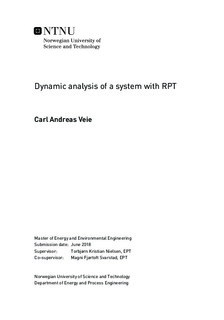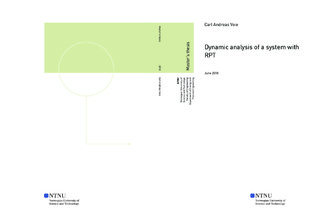| dc.description.abstract | The purpose of this master thesis is to establish and validate a simulation model
of the transition from pump to turbine mode of operation for hydropower systems
with reversible pump-turbines (RPTs). The model builds on the one-dimensional
turbine model presented by Nielsen [Nielsen, 1990. "Transient characteristics of high head Francis turbines". NTH], but uses pump mode of operation as a basis.
Simulations have been carried out in MATLAB, and compared with measurements
from the RPT rig at the Waterpower Laboratory at NTNU.
Simulation of transition from pump mode to turbine mode was conducted by cutting
the torque from the motor that drives the RPT in pump mode. This reduces
the rotational speed of the runner and it starts rotating in the other direction due
to the hydraulic torque from the water, and ends up at runaway speed in turbine
mode.
The results from the simulations and measurements are fairly similar in pump
mode, but very different in turbine mode. At the end point of the simulations the
rotational speed is only 1=3 of the speed at the end point of the measurements.
There are several reasons for this difference, but insufficient accuracy of the model
of the pump-turbine characteristics in turbine mode plays an important role. The
model does not take into account that there are two different heads for zero flow
depending on whether the RPT is going from pump to pump brake or from turbine
to reverse pump mode. The simulation results are also influenced by the assumption
of neglecting elasticity and the switch of causality between pump and turbine mode.
Torque is the controlling parameter in pump mode, while this is the role of the
hydraulic head in turbine mode. All these factors are part of the explanation of
why the simulations do not follow the same trajectory as measurements in the
H-Q-diagram. | |

